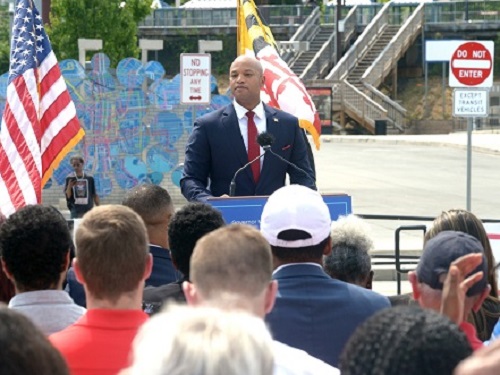The Maryland Department of Transportation recently launched what it calls a “bold new approach” to bring public and private interests together to help create “inclusive growth” at transit hubs statewide.
[Above photo by Maryland DOT]
The department is kicking off this new effort along the corridor linking Baltimore with Washington, D.C., with studies planned along the Maryland Area Regional Commuter or MARC Penn Line and around light rail and subway stations in the Baltimore region.
“We have a unique opportunity to enliven our neighborhoods, bring residents and visitors together and celebrate the people and places that make Maryland special,” said Governor Wes Moore (D) (above) in a statement.
“With equitable, sustainable and accessible transit as the centerpiece, we can respect and preserve the things we love about our neighborhoods, and rejuvenate them as vibrant economic centers of community life,” he said.
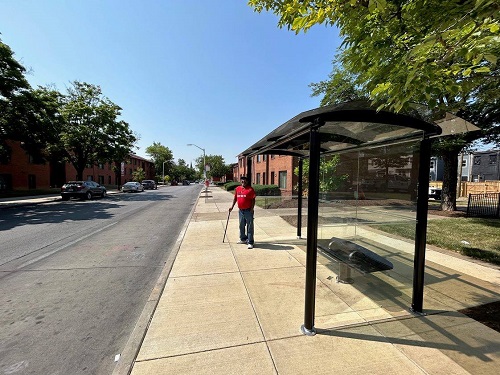
The Maryland DOT said its new approach to transit-oriented development or TOD varies from past, when requests for proposals for joint development were issued based on immediate market needs. Instead, the agency plans to take a more “proactive” and leadership-focused role before development partners are solicited.
This approach will enable the state to develop a feasible strategy based on the type of transit service, partnerships with local jurisdictions, and the public investment needed to make transit-oriented development in Maryland as impactful as it can be, the department said.
The goal is to help shape a long-term vision for transit station sites as community focal points that support local economic development goals; support housing and job creation; grow transit ridership by increasing mobility options and improving connections; increase transit revenue; and advance the state’s climate change goals.
Residents, businesses, community institutions, government agencies and others will collaborate to determine the right mix of transit, retail, office, jobs, housing, essential services, walking and biking features and recreational space at specific sites, Maryland DOT emphasized – then focus the strength of all stakeholders and all levels of government to make that vision a reality.
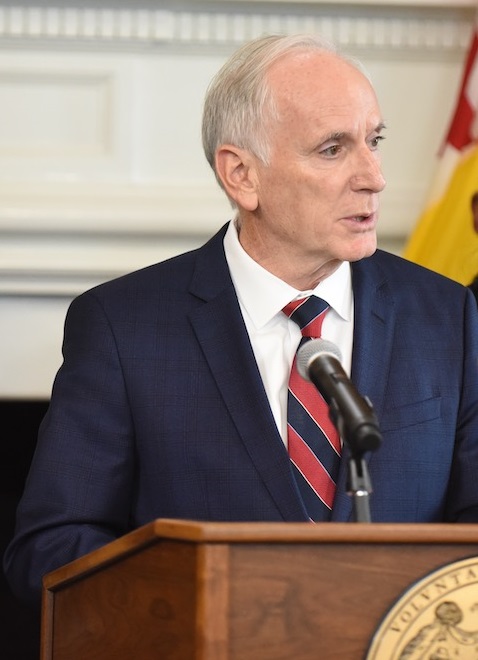
“Transit centers combining rail, bus, bike, pedestrian and vehicle access have tremendous power to bring people together, drive inclusive economic growth and enliven our communities,” explained Paul Wiedefeld, Maryland DOT secretary.
“If we work together as residents, officials, community advocates and business leaders, we can create unique town centers and main streets that interact with one another, yet offer opportunities that are special to each neighborhood,” he added.
As a first step, the Maryland DOT and the Maryland Economic Development Corporation have issued two requests for proposals calling on the development and planning community to study new development at stations along the MARC Penn Line in the Baltimore-Washington corridor and to look for innovative ideas to support investment around light rail and subway stations in the Baltimore region.
Penn Line stations are the busiest in the MARC system, with about 50 acres of state-owned land adjacent to MARC stations along this line. However, the study also will consider the idea that some publicly owned lands might also join development or redevelopment plans.
A second phase of the Penn Line study will engage a similar review of MARC stations north of Baltimore, including Martin State Airport, Edgewood, Aberdeen and Perryville. Both phases will take into consideration increased MARC service, with cross-state service into Delaware and Virginia anticipated based on Maryland’s recent framework agreements with both states to advance discussions and explore pilot service opportunities.
The second request for proposals is for a study to look at incentivizing investment in transit-oriented development around MTA’s light rail and Metro subway stations in the Baltimore region. The study also will help determine subway or light rail stations that have strong market potential for transit-oriented development providing the greatest value for the state and local communities. The goal is to identify three sites with potential for action within a five-year period.
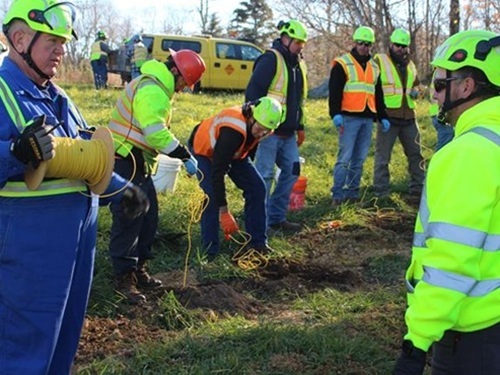 States
States
NCDOT Staff Participate in ‘Explosive’ Technical Training
December 19, 2025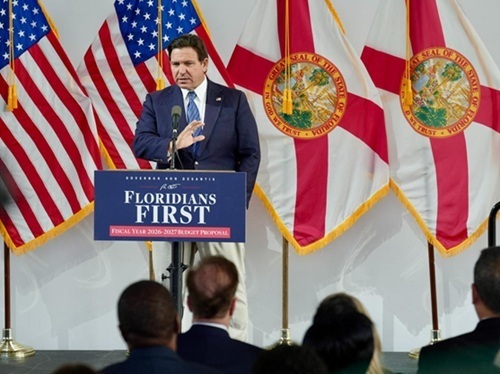 States
States
